How to win over… the vibrant Vietnamese beauty consumer
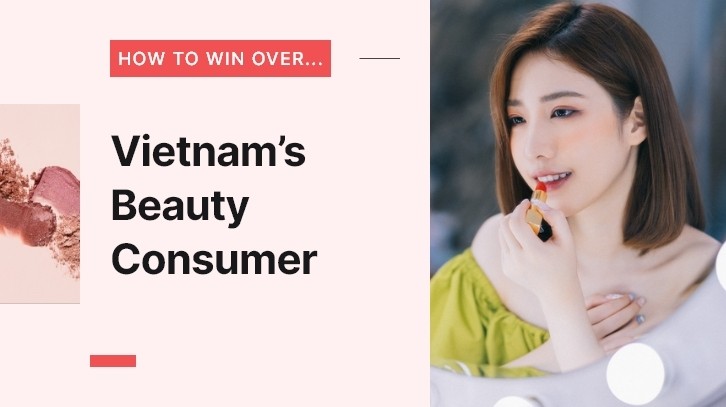
Among all countries in South East Asia right now, Vietnam arguably epitomises the next chapter of growth in the region for beauty. To many players, it is a new frontier brimming with consumers eager for new beauty experiences.
“Vietnam is super exciting because it's just growing so quickly, so rapidly. And the consumers are very open to changes and very open to new things. It's fun for distributors and brand owners to go in and be a part of that growth and excitement,” said Karen Ong, chief commercial officer of LUXASIA, a Singapore-based omnichannel distributor of luxury niche fragrance and cosmetic products.
The Vietnamese beauty market has emerged as a major prospect for beauty brands, such as Aveda, which marked its official launch in Vietnam in August in partnership with LUXASIA.
“Vietnam is the most vibrant market in South East Asia. It’s such an untapped opportunity. I cannot express enough how tremendously honoured and excited I am about Aveda’s launch in the Vietnam market, a place of unlimited potential and growth,” said Kelly Park, vice president and general manager of Aveda Asia Pacific told CosmeticsDesign-Asia.
The market's rapid growth itself is a significant draw. Vietnam's steadily advancing economy has boosted disposable incomes, enabling more consumers to invest in beauty and personal care products.
This increasing purchasing power has led to a growing demand for a wide array of beauty offerings.
What is most exciting for beauty companies is its youthful population. With a significant portion of Vietnamese consumers falling into the millennial and Gen Z demographics, there is a strong willingness to experiment with new products.
These tech-savvy generations are highly influenced by social media, global beauty trends, and evolving standards of beauty.
“It’s a very young market. The median age is only 30. They love beauty and they love luxury. For us, it’s very fun to get to play in a market where the demographic is a lot more open to the engagement we do,” said Ong.
Johanna Monange, CEO of bespoke fragrance house, Maison 21G echoed LUXASIA’s enthusiasm for Vietnam’s youthful and increasingly affluent population.
“The population is super young in Asia, one of the youngest. The Vietnamese girls are an icon of femininity. They love their hair, makeup, and perfumes – they love to take care of themselves. That’s why this market has so much potential.”
Ong highlighted the resemblances between the current Vietnam market and China’s market about over a decade ago.
“The consumers are just very hungry for brands and for luxury. If you engage them in a way that they are familiar with, they really do embrace it,” said Ong.
Early birds get the edge in retail
Vietnamese consumers often hold international beauty brands in high regard, perceiving them as synonymous with quality and reliability. This inclination toward foreign brands presents a golden opportunity for global beauty companies to establish a strong foothold in the market.
“If the brand is already very desirable, if you know what you’re doing and know how to bring in a brand through the right channels at the right price point, you can’t put a foot wrong. If you’re talking to the right consumer, they are very open to embracing it,” said Ong.
LUXASIA has helped brands such as Acqua di Parma, Aveda, POLA, and Guerlain, enter the Vietnamese market.
Major players like L’Oréal, Estée Lauder and Shiseido have developed a presence in the market in the last decade or so. In this case, being ahead of the game pays off greatly.
“We’ve been operating in this market for more than 10 years. And because we’re already established, it’s not as difficult for us to make headway. You can say we’ve sort of grown with the market. But if you are just trying to enter the market now, it’s very competitive,” said Ong.
While the Vietnamese beauty market is highly competitive, it is not yet oversaturated. There is still ample room for niche and specialised brands to carve out unique spaces and cultivate a loyal following among discerning consumers.
While Vietnam is not considered a key growth market for Maison 21G now, Monange highlighted the importance of building its presence in the market early. “I like to bet on the future. Vietnam is an investment for the future.”
For all brands big and small, one major contention is the lack of physical retail space.
“The retail landscape is rather limited. There are a few department stores, with Takashimaya being the leading department store player. If you want to get space in Takashimaya now, there’s intense competition. If not, you can go to a local department store such as Diamond, and there are some local chain stores,” Ong explained.
“Basically, it’s a very limited landscape. And rental is no longer cheap because these malls and landlords know that real estate is very much in demand. Actually, in some of the key malls, the rents are actually comparable to Singapore.”
In 2021, Maison 21G launched in Ho Chi Minh City with its own standalone store. Monange told us this was important for the brand to “have a space that is ours”.
“We opened our store in district one – you need to be in district one. And you need to have the right local partners, this is super important. We started with the edgy people and then go a bit more mass with the distribution. You need to build your front image and be a bit exclusive. Now we have a pop-up in Takashimaya and we’re queueing up to have a space among the big brands.”
While brands can efficiently reach consumers even in the most remote areas thanks to the digital marketplace, nothing can replace the excitement of going into a store.
“For luxury, for beauty, people still want to touch and feel. The tactile aspect of the products is very important. People still want to smell the fragrances, feel the textures of the cream, see the colours of the makeup on the skin.
“If you want to be a serious player in Vietnam, you cannot not be online and you cannot just be online. The credibility is not there. And it’s not very exciting too. People still want to be a part of that luxury experience. They want that excitement of going to the flagship store, being served and enjoying the luxury retail experience.”
The age of online influence
Vietnam is a nation of digital natives. Young Vietnamese consumers have embraced online shopping as a convenient and efficient way to access a wide array of products and services. They are keen to explore diverse brands, compare prices, and make informed purchase decisions in the virtual marketplace.
The country has witnessed an extraordinary surge in its e-commerce landscape, ushering in a new era of digital commerce. According to Google’s e-Conomy SEA 2022 report, Vietnam was among the top three countries attracting the most investors in the e-commerce sector.
Market leaders in the e-commerce space include SEA-owned Shopee and Alibaba-backed Lazada. However, homegrown players Tiki are looking to challenge their dominance in the market.
“They're really very comfortable digitally and they buy online very comfortably. Social commerce is also a space in which they are very comfortable buying products from. I would say they are one of the most progressive when it comes to social commerce in the region. People buy off Instagram, Facebook, which is not so common yet in some other countries, such as Singapore,” said Ong.
TikTok is among the most commonly used social media applications in Vietnam alongside stalwarts such as Facebook, Instagram, and YouTube. Zalo, a locally developed social networking and messaging application, also enjoys a strong presence among Vietnamese users, both domestically and among the Vietnamese diaspora.
At the same time, social commerce has been gaining momentum, with TikTok launching TikTok shop in 2022 to capitalise on the social commerce buzz. Social commerce boomed during COVID-19, driven by necessity as brick-and-mortar doors remained shuttered.
“During COVID-19, we saw the rise of things like residential groups, where people would sell things online through Facebook or Zalo. It was a convenient way for people to get their groceries and today these groups still exist, and many people prefer to buy some items online,” said Bui An Vy, managing director of Maison 21G Vietnam.
When it comes to buying beauty products online, consumers may have some hesitancy due to the rampant issue of adulterated or fake products. According to Bui, this has partly contributed to the rise of social commerce.
Much of the social commerce landscape is led by key opinion leaders (KOLs), such as Hannah Olala, who have earned the trust of her followers.
“For beauty, people like to see famous people swatch the products or see the texture on the skin. Nowadays, I notice that when some KOLs sell shampoo, they will wash their hair on the live stream,” said Bui.
What’s trending: Skin, colour and scent
Like many Asian countries, Vietnam is primarily a skin care market. There is high awareness on the importance of skin health and their use of makeup gravitated towards simplicity with a focus on complexion products.
Among Vietnamese consumers, there is a broad consciousness of the need for sun protection. However, clothes and accessories are the preferred means of sun protection, and the importance of topical sun protection is growing steadily.
According to Ong, beauty consumers today are looking for sun care products that include skin care benefits like moisturisation as well as subtle cosmetic benefits like a skin evening tint.
Bui also noted that consumers are keen to learn more about skin care ingredients. Currently, popular ingredients include alpha hydroxy acids (AHAs), beta hydroxy acids (BHAs), retinol, and tretinoin.
Colour cosmetic habits are also changing, with more interest in products such as lipsticks, eyeliners, mascaras, and eye shadow palettes.
Consumers are also gaining more appreciation for fine fragrances. According to data from Maison 21G, Vietnamese consumers have a wide olfactory range.
“There’s a level of sophistication I didn’t see in China, for instance. They love woody notes, like vetiver and cedarwood. They love fresh notes, but sexy notes as well, which is rare in Asia. They will go for amber and vanilla. Their range is very interesting.”
When it comes to trends, Vietnam is still very much influenced by its neighbours like Thailand and China. Regionally, South Korea and Japan also have a major hand in shaping the landscape.
“They're big skincare users. They have a preference for natural-looking beauty which is why they resonate with the Korean and Japanese styles of makeup. They are into the whole idea of clear complexions and that glass skin look,” said Ong.
These beauty preferences make Vietnam the ideal market for Japanese beauty titan SK-II, which was set to launch on September 28 in partnership with LUXASIA.
“We will be officially launching the global prestige skin care brand, SK-II, in Vietnam at the prestigious Takashimaya Department Store at Saigon Centre, Ho Chi Minh City. This is an immense milestone for us. We are beyond thrilled and absolutely proud to be appointed the full-service distributor for SK-II in six markets – Singapore, Malaysia, Thailand, Indonesia, Australia, and Vietnam,” said Ong.
According to South Korea’s Ministry of Food and Drug Safety (MFDS), Vietnam accounts for the lion’s share of cosmetic exports to SEA. Brands such as Dr. G have expressed interest in the market, especially in the wake of China’s sluggishness.
In terms Korean cosmetics export volume, Vietnam ranks as the fifth largest export market and is continuing to grow. From 2021 to 2022, exports of Korean cosmetics to Vietnam increased by 23.4%.
Meanwhile, exports to China, Hong Kong, and Japan all decreased by 26%, 31.8%, and 4.9% respectively. Exports to the US dipped slightly by 0.2%.
MDFS has announced plans to intensify its market diversification strategies and reduce its reliance on China exports, which have been weakening due to several factors such as geopolitical tensions and COVID-19.
In line with this, MFDS and the Drug Administration of Vietnam (DAV), a regulatory authority under Vietnam’s Ministry of Health (MOH), are working together to boost cosmetic exports to Vietnam.
Both regulatory agencies aim to do so by easing export procedures, such as dossier requirements for K-beauty companies exporting to Vietnam. The MFDS highlighted high requests for “streamlined documentation”.
Navigating Vietnam
For most brands, the first port of call in Vietnam is Ho Chi Minh City, which some locals still affectionately refer to as Saigon. It is the country’s major finance and business hub and its most populous city. Hanoi, on the other hand, is the capital of Vietnam and holds the soul of Vietnam with its romantic Old Quarters.
“Most of the beauty consumption – around 70% – happens in Ho Chi Minh. It’s a bit like the Shanghai of China. Usually, brands try to enter the market via Ho Chi Minh. But then again, its not an exact science and some brands do choose to enter Hanoi.
“Hanoi is to the north, akin to Beijing. So that’s where government officials and some large multinational corporations are headquartered. It’s more of a commercial centre, where a lot of foreign investments started initially,” Ong explained.
Beyond Ho Chi Minh City and Hanoi are tier-two or tier-three cities, most famously, as Da Nang. Known for its beautiful beaches, historical sites, and vibrant atmosphere, Da Nang has become a popular destination for tourists.
As a travel destination, Vietnam is an increasingly popular choice for travellers for its unique cuisine, rich culture, and natural beauty.
The increase in tourism represents a major opportunity for beauty brands in the travel retail sector. This is an opportunity both LUXASIA and Maison 21G are keeping a close eye on.
“Travel retail is going to be a huge part of the Vietnam market going forward. It already is even though it's not very dominant at the moment. We do foresee that there will be growth in Vietnam travel retail. LUXASIA as a group, we’re not there yet but we are not closed off to venturing into that space. If that’s where the consumer is, we will go where they are,” said Ong.
A ‘growth driver’ for beauty
With its rapidly advancing economy and increasing disposable incomes, Vietnam has created a fertile ground for beauty brands.
“We believe that Vietnam will be a growth driver for LUXASIA. It’s one of the markets in which many brands are paying a lot of focus and attention too,” said Ong.
This is especially so given that more players are turning their attention beyond China in search of growth opportunities.
“With China’s economy slowing down and the recovery post-pandemic slower than expected, people are looking outside of China for growth. And Vietnam is very, very promising,” said Ong.
“We’re talking to many different band partners for bringing their brands into Vietnam. We're rushing to increase our capacity to be able to you know, meet the demands, the market is ready. The people and consumers are ready. So, we’re very, very excited to do that.”
Vietnam's beauty market offers a vibrant and promising landscape for brands willing to tap into its potential. The market remains open to both big players and niche brands. Its youthful population, largely consisting of millennials and Gen Z consumers, is eager to experiment with new products and heavily influenced by social media and global beauty trends.
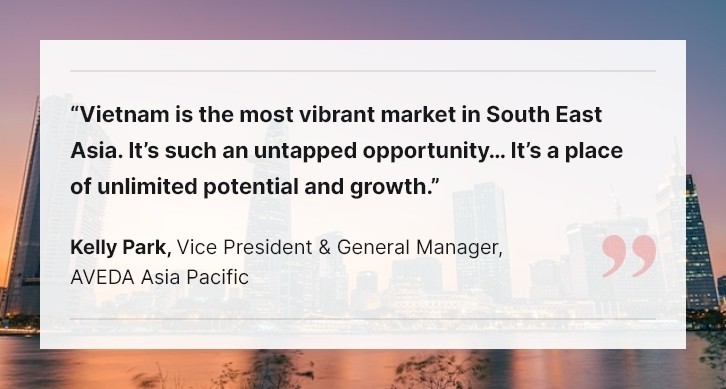
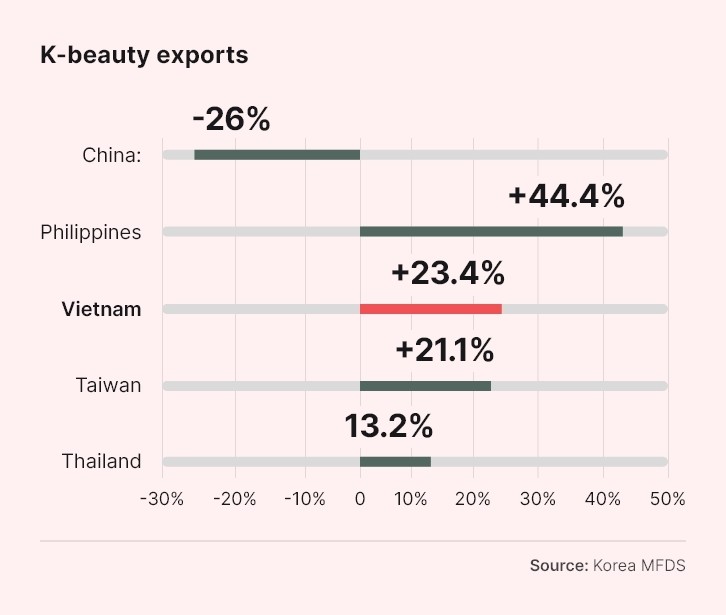
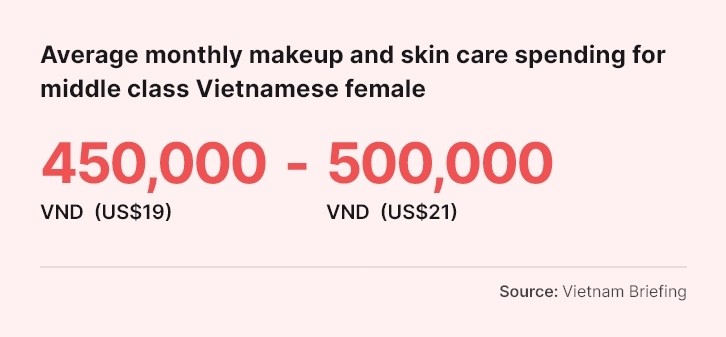
![Estée Lauder is eyeing opportunities in China’s luxury beauty market. [Estée Lauder]](/var/wrbm_gb_food_pharma/storage/images/_aliases/wrbm_medium/publications/cosmetics/cosmeticsdesign-asia.com/headlines/business-financial/estee-lauder-teases-plans-to-capture-luxury-opportunity-in-china/17157452-1-eng-GB/Estee-Lauder-teases-plans-to-capture-luxury-opportunity-in-China.jpg)
![A regulation expert is calling for heightened vigilance in the cosmetics industry after an Australian skin care brand was found to be engaged in misleading and deceptive conduct. [Getty Images]](/var/wrbm_gb_food_pharma/storage/images/_aliases/wrbm_medium/publications/cosmetics/cosmeticsdesign-asia.com/headlines/regulation-safety/biologi-case-highlights-urgent-need-for-more-stringent-enforcement-of-consumer-laws-regulation-expert/17008275-1-eng-GB/Biologi-case-highlights-urgent-need-for-more-stringent-enforcement-of-consumer-laws-regulation-expert.jpg)
![Kosé has obtained approval from Japan’s health ministry to use its new whitening active ingredient. [Getty Images]](/var/wrbm_gb_food_pharma/storage/images/_aliases/wrbm_medium/publications/cosmetics/cosmeticsdesign-asia.com/article/2023/11/14/kose-receives-approval-for-new-skin-whitening-active-derived-from-liquorice/16854906-1-eng-GB/Kose-receives-approval-for-new-skin-whitening-active-derived-from-liquorice.jpg)
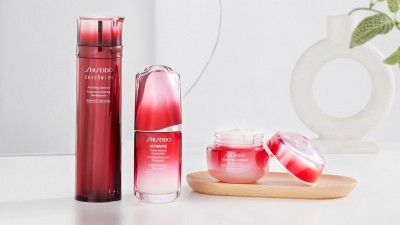


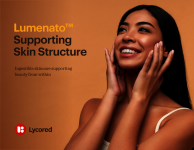



![[Getty Images]](/var/wrbm_gb_food_pharma/storage/images/_aliases/wrbm_tiny/publications/cosmetics/cosmeticsdesign-asia.com/china/china-focus-latest-developments-in-china-s-booming-beauty-market22/17370102-1-eng-GB/China-focus-Latest-developments-in-China-s-booming-beauty-market.jpg)
![YSL's LoveShine launch has sparked a demand surge in Japan. [YSL]](/var/wrbm_gb_food_pharma/storage/images/_aliases/wrbm_tiny/publications/cosmetics/cosmeticsdesign-asia.com/article/2024/04/24/ysl-loveshine-launch-propels-lip-gloss-sales-to-record-highs-in-japan-since-2020/17372064-1-eng-GB/YSL-LoveShine-launch-propels-lip-gloss-sales-to-record-highs-in-Japan-since-2020.jpg)
![There is significant scope for innovation and new launches in the hair repair sector, especially in soaring markets such as China. [Getty Images]](/var/wrbm_gb_food_pharma/storage/images/_aliases/wrbm_tiny/publications/cosmetics/cosmeticsdesign-asia.com/article/2024/04/24/croda-zeroes-in-on-hair-repair-solutions-as-damage-hair-concerns-surge-in-markets-like-china/17362731-1-eng-GB/Croda-zeroes-in-on-hair-repair-solutions-as-damage-hair-concerns-surge-in-markets-like-China.jpg)



![Lubrizol has extended its partnership with C-beauty major PROYA. [PROYA]](/var/wrbm_gb_food_pharma/storage/images/_aliases/wrbm_tiny/publications/cosmetics/cosmeticsdesign-asia.com/headlines/brand-innovation/lubrizol-bullish-on-potential-of-c-beauty-growth-potential/17362515-1-eng-GB/Lubrizol-bullish-on-potential-of-C-beauty-growth-potential.jpg)


